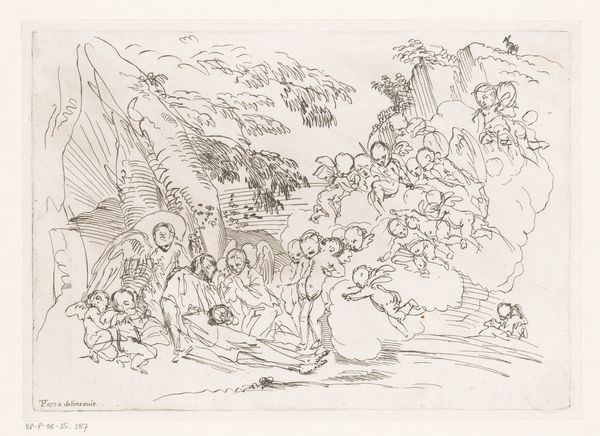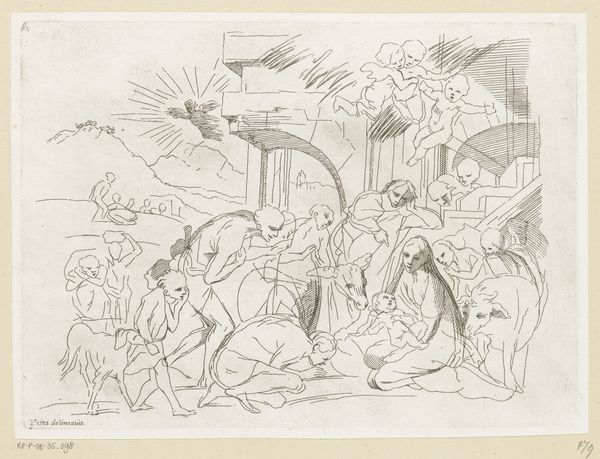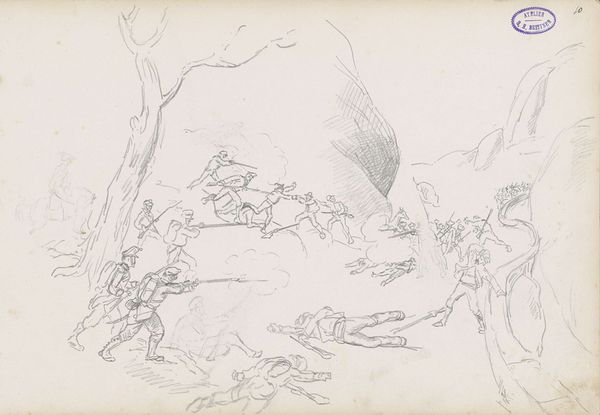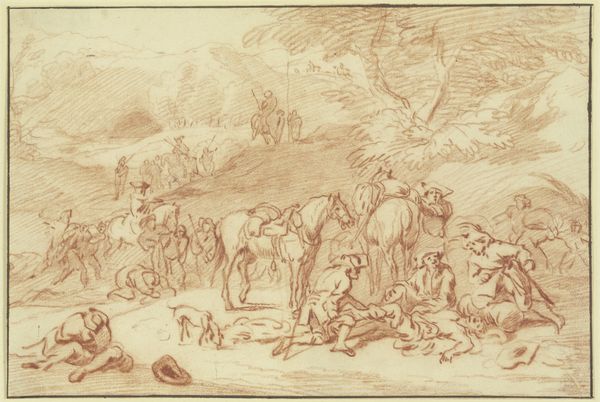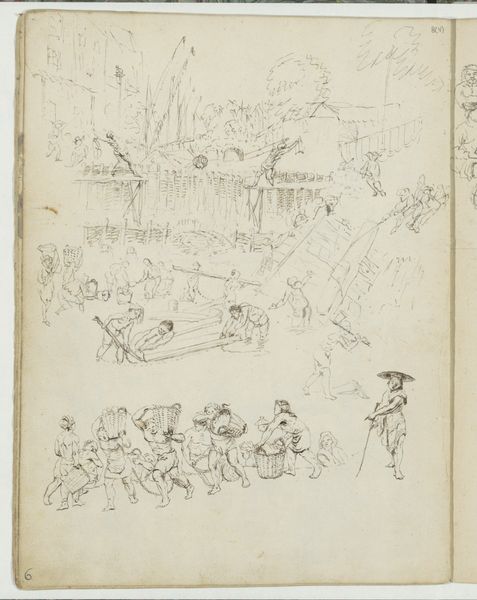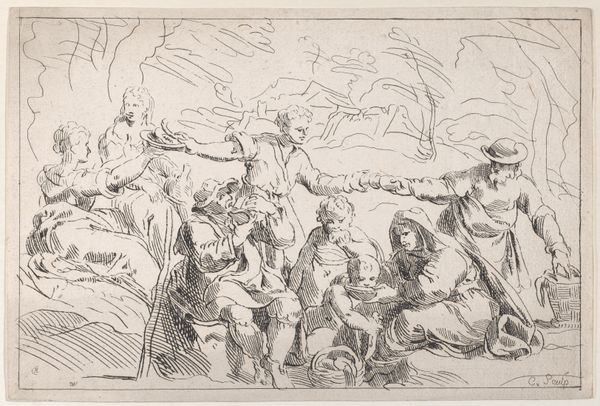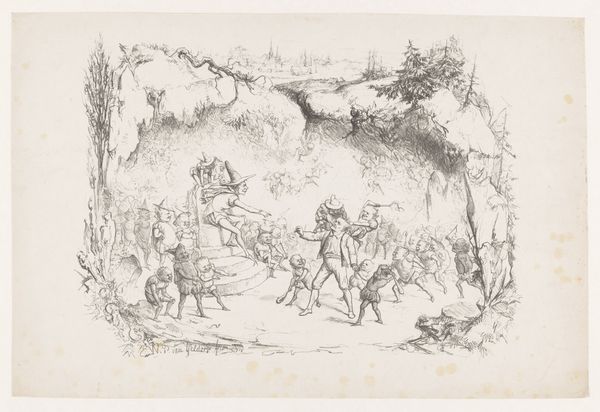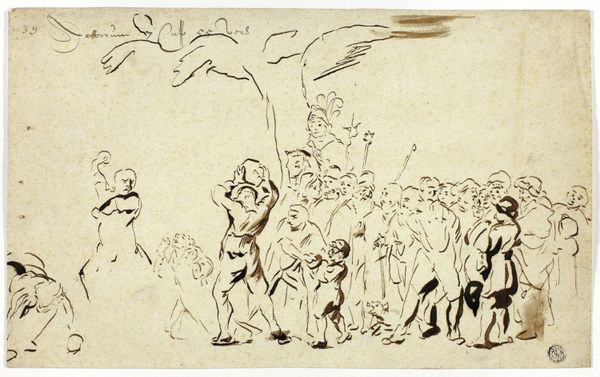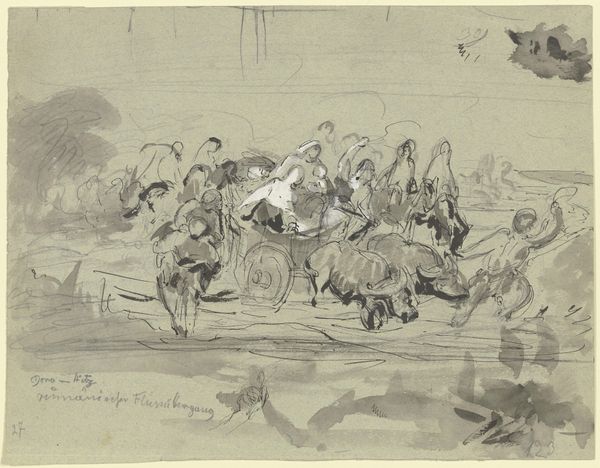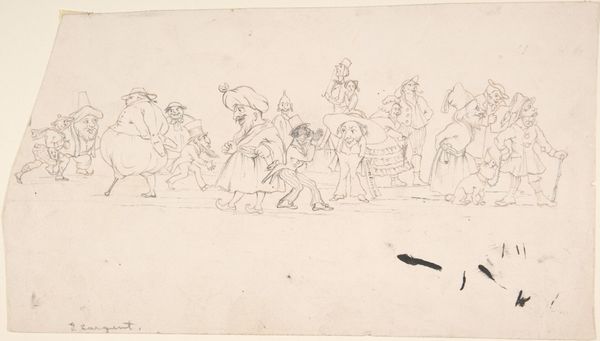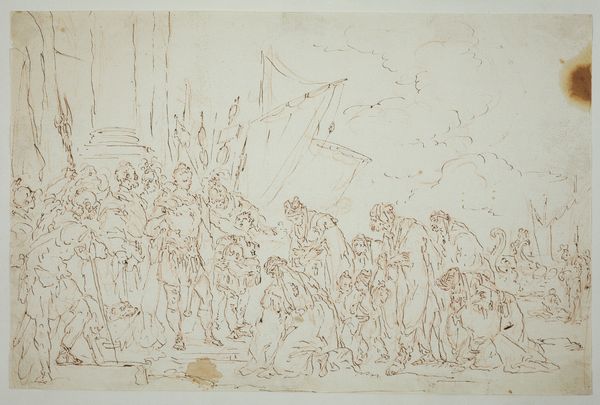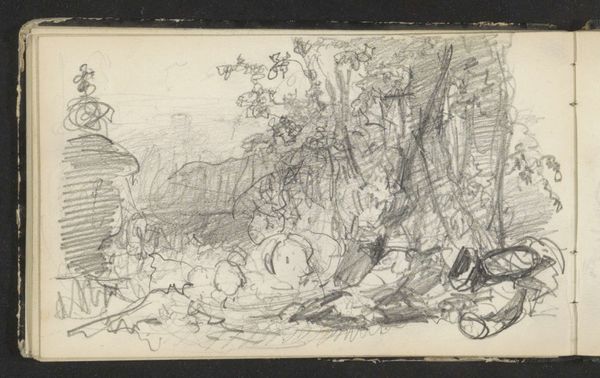
The death of Saint Pellegrino surrounded by many putti 1700 - 1800
0:00
0:00
drawing, print, ink, engraving
#
drawing
#
baroque
# print
#
pen sketch
#
figuration
#
ink
#
history-painting
#
engraving
Dimensions: plate: 7 5/8 x 10 13/16 in. (19.4 x 27.5 cm) sheet: 7 3/4 x 10 7/8 in. (19.7 x 27.7 cm)
Copyright: Public Domain
Editor: So, this is an anonymous engraving from the 18th century, "The Death of Saint Pellegrino Surrounded by Many Putti," housed here at the Met. It feels like a glimpse into another world, kind of melancholic but also fantastical with all the cherubic figures. What catches your eye when you look at this piece? Curator: What strikes me is the negotiation between power and piety it depicts, couched within the visual language of the Baroque. Consider the performative nature of sainthood and the ways it often intersected with dynastic power. Is Pellegrino a figure who embodies humility and spiritual resistance, or is his death being instrumentalized for larger socio-political narratives? Editor: Hmm, I hadn’t thought about the political implications. So the image isn't just a straightforward depiction of religious devotion? Curator: Exactly! Look at the strategic composition: The putti almost swarm him, divine witnesses framing the scene. Who commissioned this work, and what message were they hoping to disseminate about power, mortality, and the Church's role within society? We should consider the historical context; were there power struggles during this time? Religious reforms? Editor: I see what you mean. It makes me question the "purity" of religious art. The figures are so soft and idealized, maybe obscuring a more complicated truth about power dynamics. Curator: The Baroque was expert at crafting persuasive visual arguments. Think about whose stories are elevated through art and at whose expense. How might marginalized voices have interpreted an image like this during the 18th century? That, to me, is a critical question to consider. Editor: That adds so many layers to the piece! It really highlights how art can both reflect and shape the world around it. Curator: Precisely! By critically examining such pieces, we can illuminate the complex intersections of art, history, and social power.
Comments
No comments
Be the first to comment and join the conversation on the ultimate creative platform.
